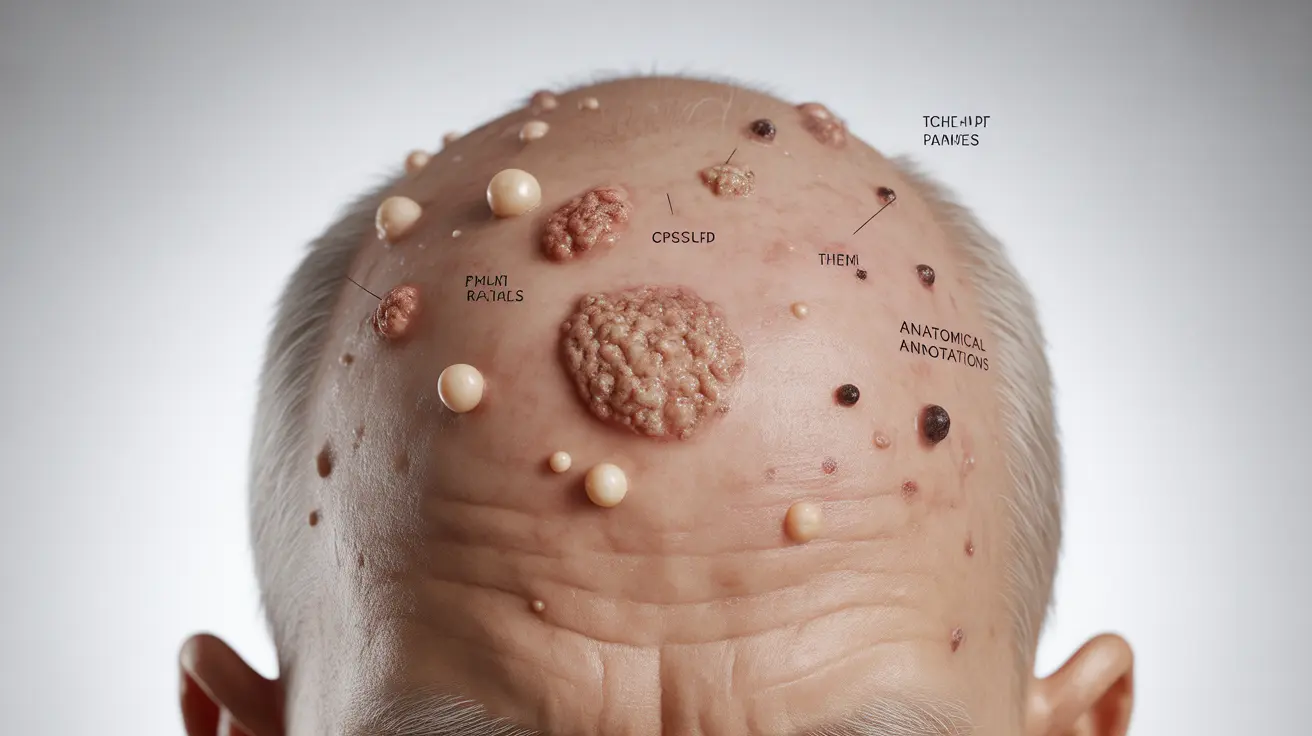Skin cancer on the scalp is a serious condition that requires vigilant monitoring and early detection. While often overlooked during self-examinations, the scalp is particularly vulnerable to skin cancer due to direct sun exposure, especially in people with thinning hair or bald spots. Understanding the signs and symptoms of scalp skin cancer is crucial for early intervention and successful treatment.
This comprehensive guide will help you understand the different types of skin cancer that can develop on your scalp, their warning signs, and the most effective treatment options available. We'll also discuss prevention strategies and when to seek medical attention.
Types of Skin Cancer That Affect the Scalp
There are three main types of skin cancer that commonly appear on the scalp, each with distinct characteristics and levels of severity:
Basal Cell Carcinoma (BCC)
BCC is the most common type of scalp skin cancer. It typically appears as:
- Pearly, waxy bumps
- Flat, flesh-colored or brown lesions
- Bleeding or scabbing sores that heal and return
- Raised edges with a central indentation
Squamous Cell Carcinoma (SCC)
SCC is the second most common type and may present as:
- Firm, red nodules
- Flat lesions with scaly surfaces
- Sores that don't heal
- Rough or scaly patches with irregular borders
Melanoma
Though less common, melanoma is the most dangerous form of skin cancer. On the scalp, it may appear as:
- Dark spots that change in color, size, or texture
- Asymmetrical moles
- Irregular border lesions
- Multiple colors within one growth
- Diameters larger than 6 millimeters
Warning Signs and Detection
Early detection of scalp skin cancer can be challenging due to hair coverage and the difficulty of self-examination. Key warning signs include:
- Persistent scalp sores that don't heal
- Changes in existing moles or spots
- New growths or lesions
- Tenderness or pain in specific areas
- Unusual bleeding or oozing
Treatment Options
Treatment for scalp skin cancer varies depending on the type, size, and stage of the cancer. Common approaches include:
Surgical Treatments
These may involve:
- Mohs micrographic surgery
- Excisional surgery
- Curettage and electrodesiccation
- Laser surgery
Non-Surgical Treatments
Alternative treatments can include:
- Topical medications
- Photodynamic therapy
- Radiation therapy
- Chemotherapy (for advanced cases)
- Immunotherapy
Prevention Strategies
Protecting your scalp from sun damage is essential for preventing skin cancer. Key preventive measures include:
- Wearing protective hats or head coverings
- Using broad-spectrum sunscreen specifically designed for the scalp
- Seeking shade during peak sun hours
- Regular scalp examinations
- Professional skin checks at least annually
When to See a Doctor
Schedule an appointment with a dermatologist if you notice:
- Any new or changing spots on your scalp
- Sores that don't heal within two weeks
- Unusual pain or tenderness
- Persistent itching
- Unexplained bleeding
Frequently Asked Questions
What are the common symptoms and warning signs of skin cancer on the scalp?
Common symptoms include new or changing moles, non-healing sores, tender spots, unusual bleeding, and changes in scalp texture. Pay special attention to any growths that are asymmetrical, have irregular borders, or show multiple colors.
How can I tell the difference between basal cell carcinoma, squamous cell carcinoma, and melanoma on my scalp?
BCC typically appears as pearly, waxy bumps or flat brown lesions. SCC usually presents as firm red nodules or scaly patches. Melanoma often appears as dark, irregularly shaped moles with changing characteristics. However, only a medical professional can make a definitive diagnosis.
What treatment options are available for skin cancer on the scalp, and how effective are they?
Treatment options include surgery (Mohs, excisional, or laser), topical medications, radiation therapy, and immunotherapy. The effectiveness depends on the cancer type and stage, but early detection generally leads to better outcomes, with Mohs surgery having success rates over 90% for many cases.
How can I prevent skin cancer on my scalp, especially if I have a lot of sun exposure?
Prevention strategies include wearing protective headwear, applying scalp-specific sunscreen regularly, avoiding peak sun hours, and maintaining regular professional skin checks. Those with thinning hair should be especially vigilant about sun protection.
Why is skin cancer on the scalp harder to detect, and when should I see a doctor for a scalp lesion?
Scalp cancer is harder to detect because hair can hide lesions, and it's difficult to examine your own scalp thoroughly. See a doctor if you notice any new or changing spots, non-healing sores, unusual pain, or bleeding. Regular professional skin checks are recommended for early detection.




